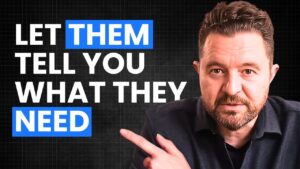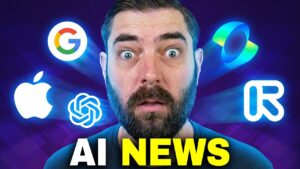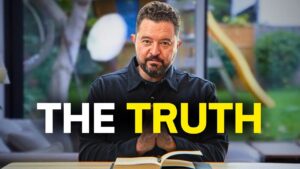“We all know the importance of creating content– but creating content for the sake of it doesn’t often result in increased sales. Content campaigns are a great way to engage your audience, build brand awareness, and drive sales quarter after quarter.”
Interesting article regarding: How to build a content campaign that drives sales quarter after quarter. by Mickey Anderson that I found on the DigitalMarketer.com blog.
*Caveat: All images, videos, audios & content are the property of their respective owners/authors. If they fail to appear because they have been moved or removed, you can here.

In this article, you’ll learn how to create a 90-day content campaign that will deliver lasting value to your business, move prospects through the customer journey more efficiently and effectively, and drive sales! Let’s get started!
6 Levels of Customer Awareness
As your prospects move through the customer journey, their awareness of your brand and offer increases.
In 1966 Breakthrough Advertising, marketer and author Eugene Schwartz identified five stages of customer awareness. Since then, digital marketing has evolved significantly, creating the need for a sixth level of customer awareness that DigitalMarketer introduced.
First, we’ll walk through each level of customer awareness and then create a content campaign that moves prospects through these levels to increase the speed and efficiency of your customer journey.
1. Unaware Stage
Customers in the unaware stage have no knowledge of the problem or perceived need for a solution. To catch a prospect’s attention and keep it, we need to stop the scroll. The best way to do that is with entertainment!
Types of entertaining content for the unaware stage:
- Shock and Awe
- Amazing Demos
- Data/Research
Examples:
- Dollar Shave Club Commercial
- Chatbooks Commercial
- Will It Blend Demo
- Thinkific 13 Membership Site Examples That Will Inspire You
- 125 Books Every Marketer Should Read
Tip: As you scroll social media and the internet, think about the advertisements and content that catch your attention.

2. Problem-Aware Stage
Customers in the Problem-Aware Stage know they have a problem but don’t know if a solution exists. They are in need of hope as they search to discover if a solution is available.
Types of hopeful content for the problem-aware stage:
- Question & Answer (Q&A)
- How-Tos
- Brand Case Study
- Success Stories
Examples:
- HubSpot How to Create a Sales Plan: Template + Examples
- Salesforce Career Stories: Q&A with Jo Gaines, Area Vice President Sales
- HubSpot Dentally Case Study
- ParkHub Case Studies
- Wild Audience Article How To Replicate Tony Robbin’s Million-Dollar Coaching Sales Funnel Template
Tip: Leverage tools like AI to help identify what questions customers may have in your industry or niche.
3. Solution-Aware Stage
Customers in the Solution-Aware Stage are researching and comparing their options. They need clarity so they can efficiently and effectively choose the best option for them.
Types of clarifying content for the solution-aware stage:
- Demos
- Tricks & Hacks
- Comparisons
Examples:
- Dr. Squatch Demo
- Comparison of Thinkific to Kajabi
- L’Oreal How To Highlight Trick
- Tony Robins Event Demo
Tip: Spend some time researching your competition to understand exactly what your customer is comparing you to so you can address their concerns.
4. Offer Aware Stage
Customers in the Offer Aware Stage are getting ready to make their decision but want to confirm that their choice is going to deliver the outcome they want. They need assurance that you are the right choice

Types of assuring content for the offer aware stage:
- Testimonials
- Social Proof
- Behind-The-Scenes
Examples:
- Romeo Athletics Nina’s Story
- Golf Galaxy Customer Testimonial
- Mel Robbins Public Speaking Story
- Amazon Web Services and Capital One
- Shopify Year In Review
Tip: Ask existing customers about the main objections they had before buying and create content that overcomes those objections.
5. The Most Aware Stage
Customers in the Most Aware Stage know you are the best solution for them, but they need a reason to buy now instead of waiting for a better time. The best way to motivate action is with novelty.
Types of novel content for the most aware stage:
- Scarcity & Urgency
- Feature Release
- Product Launch
- Promotion, Sale, Bonus
Examples:
- DigitalMarketer New Ecommerce Certification Launch
- New Releases on Netflix
- Peleton Promotion
- Graham Cochrane New Feature on Kajabi
Tip: There are many ways to create a sense of urgency, scarcity or loss aversion in your customers without sales, including bonus stacking and limited-time offers.
6. Disengaged Stage
Customers in the Disengaged Stage need to be reminded of their connection to your brand and why you are an important part of their life. They need to be romanced so they can feel the ‘warm and fuzzies’ beyond what you are selling.
Types of romance content for the disengaged stage:
- Origin Stories
- Behind-The-Scenes
- Bloopers
- Mission Statements
Examples:

Tip: Think about your experience as a consumer and reflect on times when you became disengaged with a brand. What caught your attention and brought you back?
The 90-Day Campaign Framework
The purpose of the 90-day campaign is to leverage your organic content to move prospects through the levels of customer awareness and lead them to a promotional period.
This ensures that more prospects are offer informed and ready to buy while giving your content an overall strategy and consistency across platforms. Most businesses have a significant promotional period, sale, launch or event each quarter, making this an ideal timeline.
Evergreen Content
One of the biggest benefits of this framework is that your content is evergreen, meaning it will continue to drive traffic and conversions long after it’s published. You can easily drive ads to your pillar content, leverage remarketing ads to those who visit your pillar content, repurpose content for future campaigns, and make simple updates to keep the content relevant.
Campaign Offer & Theme
The 90-day campaign is used to promote one offer, and each piece of content created should be directly tied to the offer and the ideal customer. Choosing a unifying theme beyond just your offer can help tie all content throughout the campaign together and increase its effectiveness.
Effective themes are taken directly from your customer avatar and can be a) a problem that your offer solves, b) a fear that your offer overcomes or c) a perspective shift that your ideal client needs to successfully achieve their desired outcome.
Campaign Timeline
The 90-day campaign timeline starts with 8 weeks of pre-promotion, followed by a 2-week promotional period and finishes 2 weeks of post-promotion nurturing.

Content Distribution
There are three primary distribution channels used in this content campaign. However, additional channels may be added.
- Website (Blog)
The first channel is your website, where you will post pillar content pieces in the form of articles, videos or podcasts. These pillar pieces should include advertisements for your lead magnet to increase email subscribers, along with advertisements for the chosen offer you are promoting throughout the campaign.
You will be splintering and distributing the pillar content to your email list to drive traffic to your website and increase engagement. During the promotional phase of this campaign, you’ll send a promotional email sequence to drive sales.
- Social Media
You will also be splintering and distributing pillar content to social media channels with the goal of driving traffic to your website and delivering value to your audience in advance of the sale.
Creating & Splintering Content
Each piece of pillar content is splintered to create nurturing emails and social media content. This reduces the overall workload of the campaign because you are only creating the pillar pieces from scratch, and all other content is simply splintered from the existing content. This also allows you to move prospects on your social media channels and email list through the levels of customer awareness, increase email subscribers and drive traffic to your website.


Sequence Matters
As Ryan Deiss says, “sequence matters!” You don’t want to ‘propose on the first date,’ which is why this framework is so effective in nurturing relationships, warming up leads, and increasing conversions. It’s important not to alter the sequence of this framework; however, you can increase the amount of content used in a campaign.
The Promotional Email Sequence
Each piece of pillar content should promote your lead magnet, and you should also promote your lead magnet on your marketing channels throughout the pre-promotion period.
Each week of the campaign, you send out nurturing emails to your list, and although some leads will join your list later in the campaign, you can leverage email analytics to identify the warmest leads on your list by their open rates and click-through rates.
The email promotional campaign is designed to continue moving prospects through the levels of awareness while driving sales or conversions.
On all emails except the first and last email of the sequence, I recommend providing a “soft opt-out” option for subscribers to unsubscribe from the promotional email sequence without being removed from your list. This tactic decreases unsubscribes while allowing you to better segment your list for future campaigns.
Romance After The Campaign
Prospects often need additional nurturing post-promotion, especially if they didn’t feel ready to buy. The post-promotion period is used to reconnect with your audience and nurture them with value before beginning another campaign. This can be a buffer period to strategize and plan your next campaign.
Campaign Best Practices
Here are a few best practices to help you make the most of this 90-day campaign framework.
Campaign #3
This campaign framework is incredibly powerful, but like most marketing campaigns, consistency is critical. Often the first few campaigns will involve a lot of testing and learning and may not deliver instant results.
The most dramatic results come with consistency, and usually, the third campaign is when you’ll start noticing dramatic sales increases. Give yourself time and recognize that there are no silver bullets to success, but following this framework consistently will be about as close as possible.

Want to get certified in Content Marketing?
Leverage the tools and channels to predictably and profitably drive awareness, leads, sales, and referrals—EVERYTHING you need to know to become a true master of digital marketing. Click Here
Video Marketing
There’s no denying the power of video marketing, and showing up consistently on video is like adding a turbo boost to your relationship-building abilities. Whenever possible, leverage video marketing throughout the campaign.
Overcome Objections & Answer Questions
If you know the common objections and questions your ideal customers will ask, address them in your content. Use FAQ sections in your pillar content to tackle those common objections and questions, and distribute the information to your email and social channels.
AI & Execution
You can leverage the power of AI throughout the campaign, from planning to execution. AI can be used for topic ideation and building your pillar content. You can also summarize and splinter your pillar content into emails and social media posts.
Optimizing the AI output is the key to successfully using AI in this process. You will not see success using this framework if you simply let AI do the work for you. You must add your brand voice and optimize the content to meet your ideal customers’ needs and wants.
Conclusion
With this 90-day content campaign framework, you can create content that moves prospects through the customer journey more efficiently and effectively while driving sales. The process is simple to understand and execute, helps you develop valuable evergreen content, works for any industry, and can be replicated time and time again.

What do you think? Share your thoughts in the comments below! If you would like to check the source or if the respective owners have moved the images, etc., displayed in this article, you can see them here.
How to build a content campaign that drives sales quarter after quarter.
#DigitalMarketing #InternetMarketing #JVFocus


